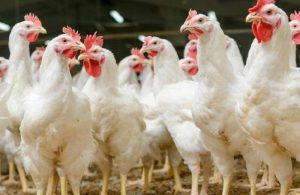I’ve bragged before about daughter Sorenne’s knowledge of pet food and treat microbiological risks. The same applies to my four Canadian daughters.
 Even my French professor partner, Amy, has become knowledgeable in things microbiological.
Even my French professor partner, Amy, has become knowledgeable in things microbiological.
I’m just really proud and full of love for all six of them (and they all play hockey, or did).
The last few months have seen numerous outbreaks or recalls related to pet food or treats.
The Public Health Agency of Canada (PHAC) collaborated with provincial public health partners and Health Canada to investigate an outbreak of E. coli O157 infections that occurred in three provinces. The outbreak appears to be over, and the investigation has been closed.
Based on the investigation findings, exposure to Carnivora brand frozen raw pet food was identified as the likely source of the outbreak. All of the individuals who were sick reported exposure to Carnivora brand frozen raw pet food, or to dogs fed this raw pet food, before their illnesses occurred.
In total, there were five confirmed cases of E. coli O157 illness linked to this outbreak in three provinces: British Columbia (2), Alberta (2) and Manitoba (1). The individuals were sick between early March and late May 2020. Two individuals were hospitalized. No deaths were reported.
Always wash hands thoroughly with soap and water after feeding, handling or cleaning up after pets. Animals fed raw meat diets are more likely to be shedding harmful bacteria like Salmonella and dangerous strains of E. coli even when they appear healthy, compared to those fed commercial kibble or other cooked diets. Regularly clean surfaces that come into contact with pet food or pets.
When possible, store all pet food and treats away from where human food is stored or prepared and away from reach of young children.
In Nov., New Jersey-based Albright’s Raw Dog Food issued a voluntary recall for 67 cases of “Chicken Recipe for Dogs” because of Salmonella contamination.
The food was sold in 2-pound frozen chubs/rolls with the lot number C000185 and best-by date 19 May 2021.
They were sold between June 8 and Aug. 27 in 10 states, including New York and New Jersey.
One animal illness has been reported. Pets with salmonella infections may be lethargic, have diarrhea, fever, vomiting or abdominal pain.
In Sept., Real Pet Food Company of Phoenix, AZ voluntarily recalled one lot of Billy + Margot Wild Kangaroo and Superfoods Recipe dog food in 4 lb bags because of a possible Salmonella health risk.
 Each year, more than 50 million Americans develop gastrointestinal issues that lead them to question the safety of their most recent meals. It’s entirely possible that their distress could be caused not by the food they have eaten, but the meals served to their furry friends.
Each year, more than 50 million Americans develop gastrointestinal issues that lead them to question the safety of their most recent meals. It’s entirely possible that their distress could be caused not by the food they have eaten, but the meals served to their furry friends.
A study led by Purdue University’s Yaohua “Betty” Feng, an assistant professor of food science, showed that many Americans don’t wash their hands after feeding or playing with their cats and dogs and aren’t aware of the risk of contracting a foodborne illness from those activities.
“Almost all dog and cat owners interact with their pets closely like cuddling, sleeping with them, kissing them, but after those interactions fewer than one-third of them wash their hands with soap,” said Feng, whose findings were published in the Journal of Food Protection. “They don’t really consider that they could get sick or that a foodborne pathogen could be transferred from their pet to themselves.”
The U.S. Centers for Disease Control and Prevention estimates that pathogens such as E. coli and salmonella sicken nearly 48 million people, hospitalize 128,000 and kill around 3,000 annually. There is no data on how many of those come from pet foods, but there have been more than a dozen pet food recalls in 2020 due to the presence of a foodborne pathogen. Last year more than 150 people were sickened by salmonella in pig ear dog treats.
“Some dogs and cats do not have symptoms, even if they were contaminated with foodborne pathogens like salmonella. There’s potential for them to share those pathogens with their owners when interacting with them,” Feng said.
According to the survey of more than 1,000 cat and dog owners in the United States:
93 percent of pet owners cuddle their pets, 70 percent allow the pet to lick them, 63 percent sleep with their pets, and 61 percent kiss their pets.
Only 31 percent wash their hands after playing with their pets, and 42 percent do not wash their hands after feeding their pets.
8 percent reported eating pet food and treats themselves.
The study showed that 78 percent of people were not aware of recent pet food recalls or outbreaks associated with foodborne pathogens in those foods. One-quarter of people do not consider dry pet foods and treats as potential sources of these pathogens.
Raw meat or raw animal product diets are growing in prevalence for supposed health benefits. The study showed that about 25% of respondents feed their pets raw foods, but about half of those people did not report washing their hands after those feedings and allowed their pets to lick them.
Feng said the results suggest that pet owners need more education about the safety of pet foods and proper handling of food and pets to prevent contracting an illness. She plans to develop materials that will address those issues.
Some tips to keep pet owners from getting foodborne illness include:
Wash hands with soap and water after preparing food for pets, petting or playing with pets, and before preparing food for people.
Avoid feeding pets raw meat.
Handle and store pet food carefully to avoid cross-contamination.
Keep up with pet food recalls and keep records of pet food lot numbers and other information for potential tracking.
“We’re not saying you shouldn’t hug your dog, but you should know the risks and how to protect yourself against the possibility of contracting an illness,” Feng said.
Risk of Foodborne Illness from Pet Food: Assessing Pet Owners’ Knowledge, Behavior, and Risk Perception
Merlyn Thomas; Yaohua Feng
Pet food has been identified as a source of pathogenic bacteria, including Salmonella and Escherichia coli. A recent outbreak linked to Salmonella -contaminated pet treats infected over 150 people in the United States. The mechanism by which contaminated pet food leads to human illness has not been explicated. Pet owners’ food safety knowledge and their pet food handling practices have not been reported. This study evaluated pet owners’ food safety knowledge and pet-food handling practices through an online consumer survey. The survey consists of 62 questions and assesses (1) owners’ food safety knowledge and pet-food handling practices; (2) owners’ interaction with pets; (3) owners’ risk perception related to their own health, their children’s health, and their pets’ health. The survey was pilot-tested among 59 pet owners before distribution to a national consumer panel, managed by Qualtrics XM. All participants (n=1,040) were dog and/or cat owners in the United States. Almost all pet owners interacted with their pets (93%) and most cuddled, allowed their pets to lick them, and slept with their pets. Less than one-third of pet owners washed their hands with soap after interacting with their pets. Over half (58%) the owners reported washing their hands after feeding their pets. Most pet owners fed their pets dry pet food and dry pet treats. Some fed their pets raw meat or raw animal product (RAP) diets because they believed these diets to be beneficial to their pet’s overall health. Many owners (78%) were unaware of pet food recalls or outbreaks associated with foodborne pathogens. Less than 25% considered dry pet foods and treats as a potential source of foodborne pathogens. The findings of this study indicated the need for consumer education about pet food handling. The data collected can assist in developing more accurate risk assessment models and consumer education related to pet food handling.












